Countersink and Counterbore Hole in PCB
When your electronic circuit board need to be locked together with other equipment by some cone shape or T shape screws, the related mounting holes need to be designed on PCB accordingly so as that the PCB manufacturer can manufacture them purposely. Generally, two types of shapes crews are widely used by designer, countersink hole or counterbore hole.
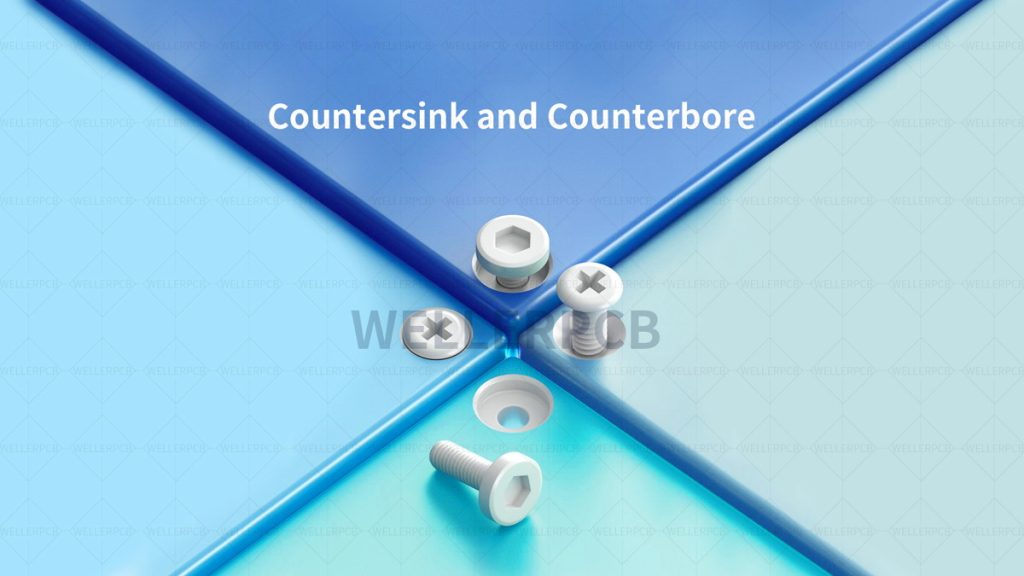
Countersink hole
A countersink hole is a hole with cone-shape drilled by PCB manufacturer on the printed circuit board in PCB manufacturing process. Typically it is used to mount the tapered head screws.
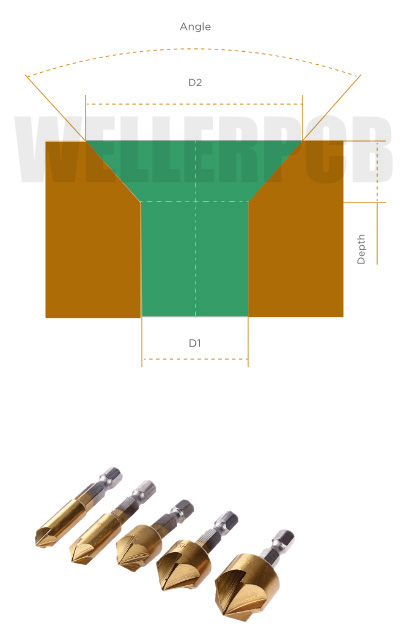
Counterbore hole
Typically a counterbore hole is used when the mounting fastener is required to mount flush with or below the level of the circuit board surface. Counterbore hole drilling including creating a flat-bottomed hole and a cylindrical-shaped hole. The sides of these flat-bottomed holes are parallel and vertically straight. And the cylindrical-shaped counterbore can allow a hex-headed screw to sit under the drilled hole. This hole is the bigger version size of a coaxial hole.
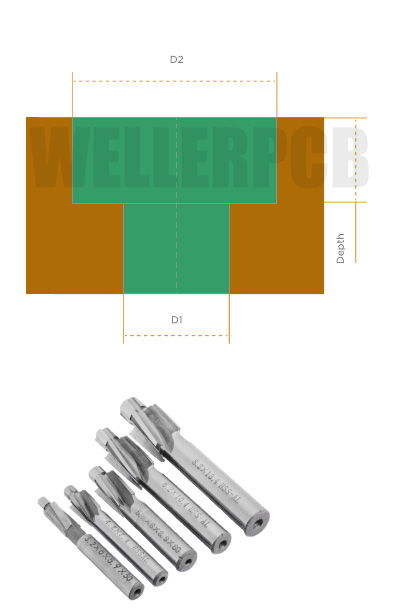
Countersink and Counterbore Hole, How to Choose it for Your PCB Design?
Countersink hole is the first choice when the design is compacted in a critical constraint space. The planarized surface can release space for more surface area. These are widely used in tight-fitting, compact applications to improve flexibility and provide space for installation. For example, they are incorporated in smartwatches, smartphones, and other smart IOT devices.
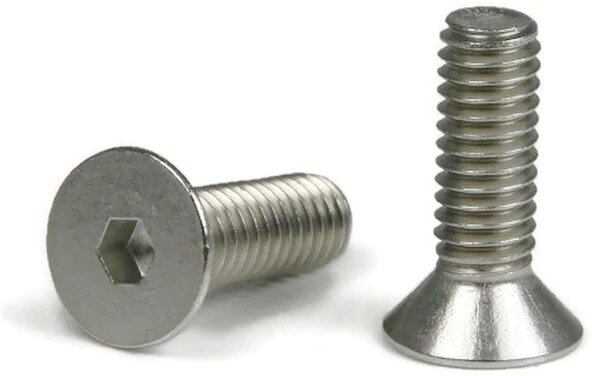
Counterbore holes generally is to provide enough space to fix the fastener. They are ideal choice when your design is required strong mounting quality rather than space-saving or surface finishes. These holes can be used in washers and other electronic products where required highly secured fitting.
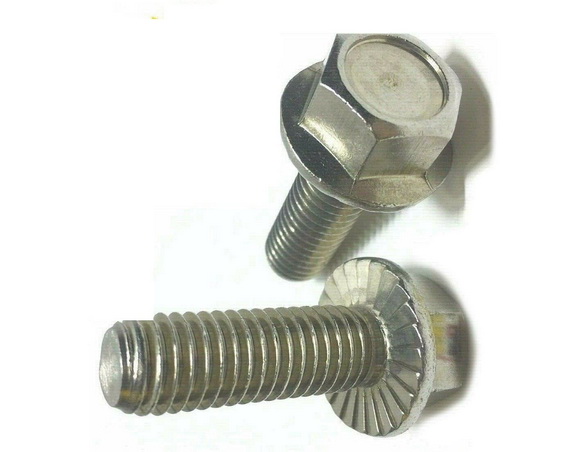
Drilling Requirements for Countersink and Counterbore
Countersink
Cone shape countersink holes require extreme precision to match the screws with a flat head. These types of holes a drill into a printed circuit board, therefore, it is vital to have correct angle. There are a wide range of drill bites with different angles is suitable for creating countersinks holes. Generally, 82°and 90°is mostly commonly applied angles. Other angles like 60°, 100°, 110°, and 120 °are also available for design requirements. It is essential to have the angle of the larger hole matched with the tapered angle of the fastener.

The depth of the sink is subject to the major hole diameter and the angle of the sink. The depth varies inversely with the sinking angle If the major diameter remains unchanged.
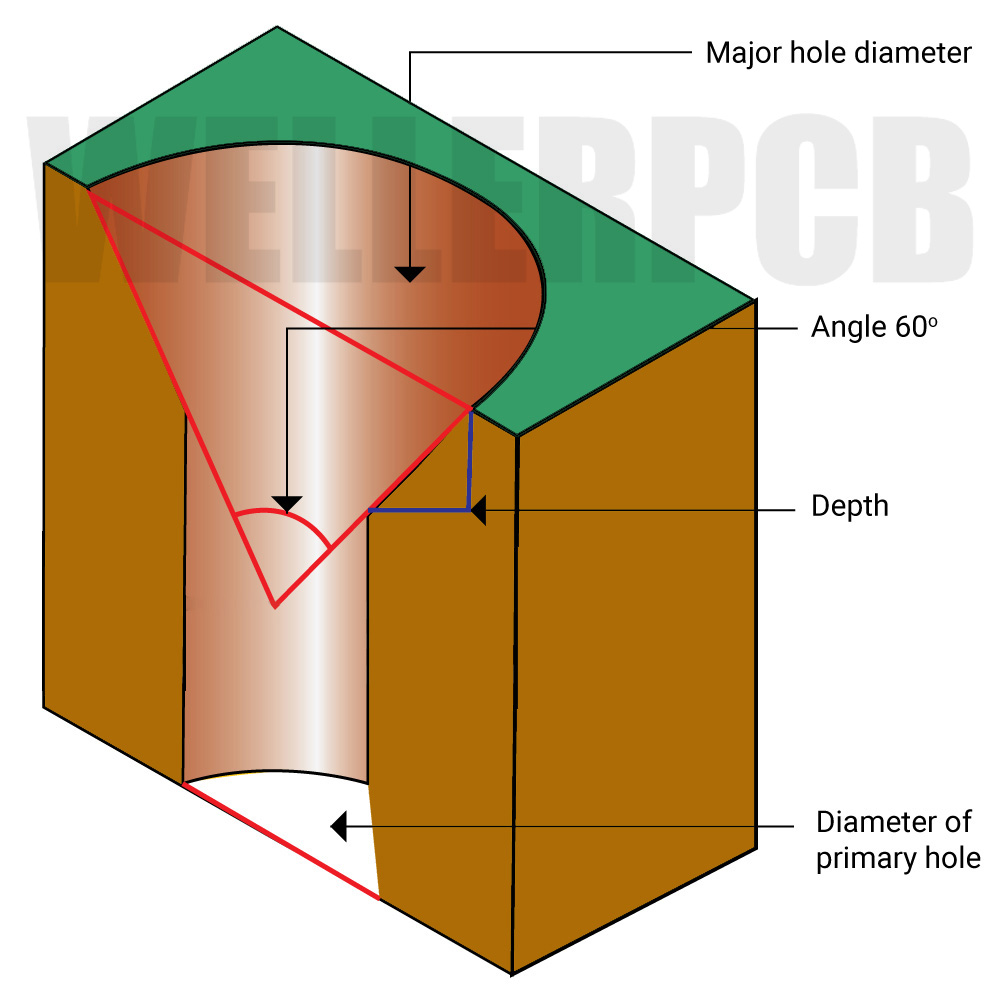
To mostly accurately drill your countersunk holes in printed circuit board, we will need the following information below:
| 1. Angle of the drill bit. 2. Major Diameter (finished diameter of the hole at the surface) 3. Depth the countersink is to be drilled 4. On which side of the board is the sink? Top or Bottom? 5. The finished diameter of the shaft of the hole 6. Is the sink and shaft to be plated(metalised) or non-plated? |
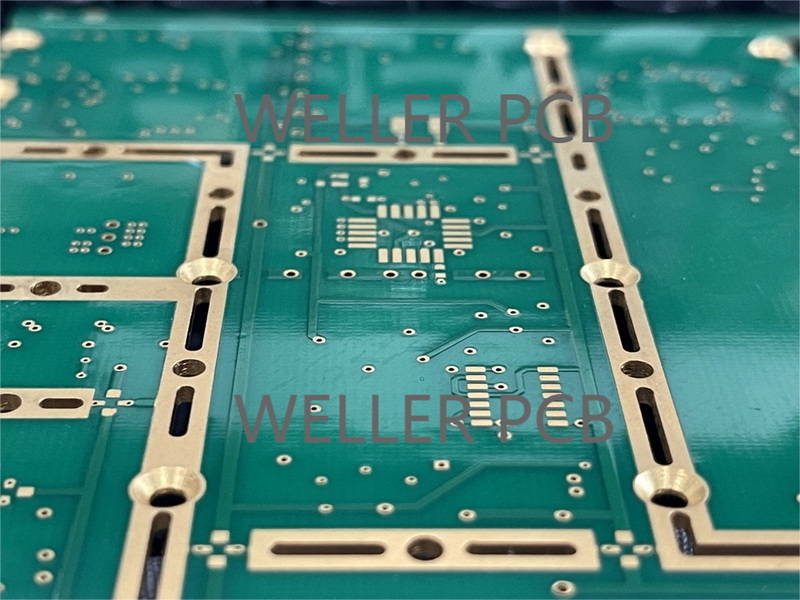
Counterbore
Because the sides of the counterbore hole are always in parallel to each other and do not require any tapering. Therefore the designer do not need to specify any angle to manufacture this.
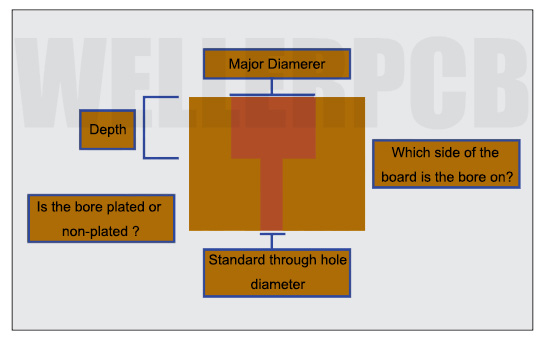
To build your counterbored holes, we need to know the below information:
| 1. Major Diameter (or finished diameter of the hole at the surface). 2. Depth the countersink is to be drilled. 3. On which side of the circuit board is the sink? Top or Bottom? 4. The finished diameter of the shaft of the hole. 5. Whether the bore and shaft are to be plated (metalised) or non-plated? |
CAD Symbolic Definition
The countersink hole is typically defined by the letter “V”, with the value of the diameter size beside that. Why using this symbol to represent that because the side view of the hole looks like the letter “V”. From a countersink symbol below where you will see that: through hole diameter size is 104mil, and countersink diameter and angle are 170mils and 100° respectively.
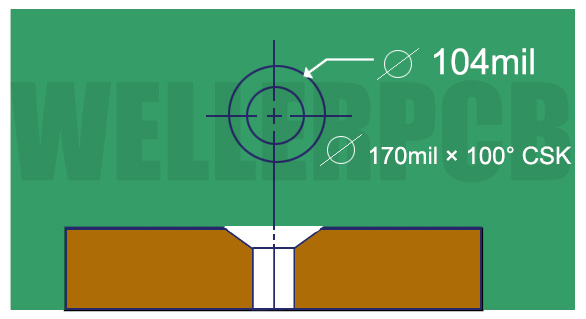
The counterbore like a square with opening from top side. These are respectively representing the drilling diameter, depth, and diameter size of the counterbore. If the material thickness below the cunterbore is significant, it is a must to define the material thickness instead of the hole depth.

Above is two types of counterbore symbols illustration. You can see from two pictures that the major diameter is 375mil, counterbore diameter is 375mil, and the drill depth is 312mil.
Countersink VS Counterbore, Similarities and Differences
| Characteristics | Countersink | Counterbore |
| Shape | Conical hole | Cylindrical, flat-bottomed hole |
| Angle | 82°, 90°, 60°, 100°, 110°, and 120° | No angle required |


